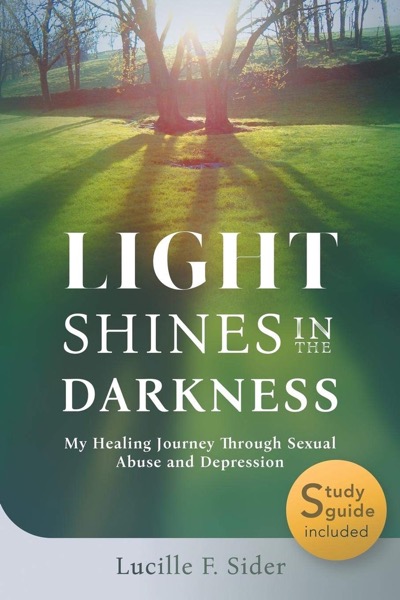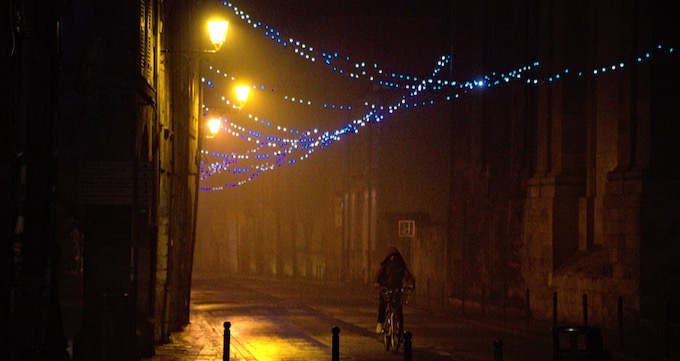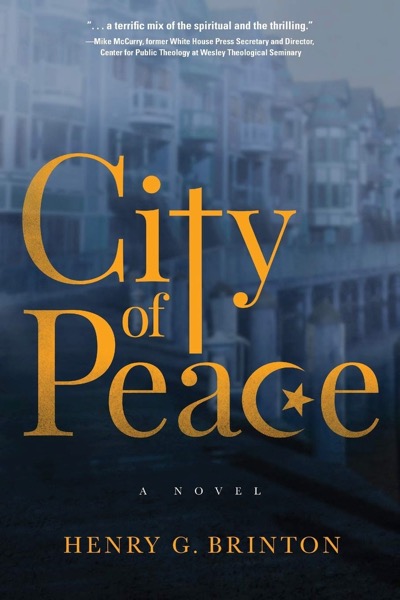.
By HENRY BRINTON
Contributing Columnist
On Saturday, December 21, my congregation will offer a Service of the Longest Night, sometimes called Blue Christmas in other traditions.
This is “one of the greatest acts of pastoral care in the Advent season,” according to Ministry Matters, and is focused on the pain and hurt that many people feel during the holiday season. Growing in popularity across the country, and sometimes called “Blue Christmas” services, these gatherings are times to acknowledge grief, loss and ACEs: Adverse Childhood Experiences.
ACEs include emotional, physical and sexual abuse, as well as emotional and physical neglect. “ACEs are common, cumulative, and are strongly associated with most of the leading causes of death in the U.S.,” says Rebecca Bryan, DNP, who spoke at a Presbyterian clergy conference I attended in October that focused on spiritual, emotional, financial and vocational health. She points out that ACEs are also associated with “health risk behaviors like smoking, disordered eating and substance abuse.”
Writing in Psychology Today, Teresa Gil says that ACEs go beyond abuse and neglect to include mothers treated violently, mental illness, divorce or separation, substance abuse, and an incarcerated family member.
Gil reports that the Centers for Disease Control and Prevention and Kaiser Permanente conducted a study comprising 17,377 middle-class adults with an average age of 57. The study examined the impact of ACEs on physical health and social functioning. In addition, they examined the relationship between ACEs and adult risk-taking behaviors.
What did they find? Adverse childhood experiences are common. One in six of the participants had four or more ACEs, and two-thirds had at least two or more ACEs. Yes, that’s right, two-thirds of the adults surveyed had at least two adverse childhood experiences.
The study also found that the problem of ACEs lasts a lifetime. High numbers of adverse childhood experiences in the first eighteen years of life are linked to poor physical health, mental health, and social functioning.
Adults with numerous ACEs are significantly more likely to behave in ways that place their health at risk. Such risk-taking behavior includes alcohol and drug abuse, cigarette smoking, compulsive eating and having multiple sex partners.
How Do We Hear These Stories?
In my novel City of Peace, pastor Harley Camden discovers that his friend Dirk Carter has struggled with the problem of ACEs.
Dirk and Harley were sitting on the third-floor porch of Harley’s house, drinking coffee and looking down on Mill Street. A slight breeze rustled the dark-green leaves of the trees along the street, and the pedestrians doing Saturday morning shopping moved from one patch of shade to another as they progressed from store to store in the bright sunshine.
“Nice view you’ve got from up here,” Dirk said as he took a bite of a cinnamon roll.
As they gazed westward, they saw a woman walking down the street, suspending a child by one arm and spanking her repeatedly. The little girl was shrieking and struggling to break free. “I hate to see a mother do that,” Harley said.
“You’re telling me,” Dirk responded. For a second it looked as though Dirk was going to reprimand the woman over the porch railing, but she stopped berating the child and the little girl began to trudge along, sobbing instead of screaming.
“Reminds me of my own mother,” sighed Dirk, settling back in his chair. “She had a fiery temper and would beat me for minor infractions. One time, when I was probably five or six, I was trying to help her clear the table. I knocked a vase off the table and it shattered on the floor. She slapped me hard and knocked me to the ground.”
“That’s terrible,” said Harley. “That would be considered child abuse today.”
“Well, it was a different time. Made me feel like I had to walk on egg shells all the time. I never knew what would set her off. She really scared me.”
“Where was your dad in all this?”
“He was around, but never intervened. Maybe he was afraid of her temper as well.”
“I bet that made you mad at your father.”
“I’ve never really thought about it,” admitted Dirk. “Mad? I don’t know. Disappointed, yes. He could have stepped in, but he didn’t. I always got the feeling that he expected me to take care of myself.”
“So, if you needed his help, you were showing weakness?”
“Right. He expected me to be a man, and I didn’t want to disappoint him.”
“I guess that makes sense at a certain age,” said Harley. “But not when you are five or six. I think he should have protected you.”
“I guess. But what’s the point of being resentful? I can’t change the past. He’s dead, and has been dead for a long time.”
Harley thought about how the dead continued to grab hold of the living and mess with them, no matter how long they had been in the grave.
What Can We Do When We Hear Such Stories?
I was thinking about Dirk and Harley while learning about ACEs at my Presbyterian conference. And while walking in the woods I found a rugged stone altar. The rough stones of the altar reminded me of the pain of life and the ACEs that continue to shape so many lives. On top of the altar is a stone with the word “hope,” which suggests that healing is always possible.
According to Rebecca Bryan, the treatment of trauma requires a shift from the question “What’s wrong with you?” to the question “What happened to you?”
In her book Light Shines in the Darkness, Lucille Sider speaks honestly about what happened to her over the course of her life. She recounts her sexual abuse as a child and teen, her divorces, and her struggles with mental illness. Through the book she helps the reader to see these challenges with exceptional clarity, and her faith and resilience provide a guiding light to those in similar situations. At one point in the book she learns that the biblical word “blessed” can also mean “mature” or “ripe.”
Answering the question “What happened to you?” is the first step in healing from trauma and moving from horror to hope. “Empowering patients to see the connections of their whole lives may well enable deep healing,” says Bryan. “I believe Jesus came in a body for a reason—to teach us to listen to our bodies. The way back — the way to healing, to breaking through the hard, protective crust we’ve formed so we can rediscover who God created us to be—is by listening to our bodies.”
When individuals are encouraged to tell their stories and listen to their bodies, connections are made between ACEs and health risk behaviors. Such understandings can set the stage for healing, and lead to a “ripeness” that might not be achieved any other way.
My church will offer a Service of the Longest Night again this year with the hope that light will begin to shine in the lives of those who are struggling, in and around our congregation.
.
CARE TO LEARN MORE?
You’ll enjoy our March cover story about Henry and his new novel.

You’ll also want to learn about two related resources we publish:
LIGHT SHINES IN THE DARKNESS
BY LUCILLE SIDER—Clinical psychologist and clergywoman Lucille F. Sider adds her voice to the chorus of women in the #WhyIDidntReport and #MeToo movements with her new book, Light Shines in the Darkness: My Healing Journey through Sexual Abuse and Depression.
This is Lucille’s story of resilience and hope as a survivor of sexual abuse. She explains the challenges of finding her way out of a fear-based spirituality into one that is full of grace, hope and forgiveness. The unique richness of her book is that she wrote it to spark healing discussion, which is why she also has included a complete study guide that’s perfect for use in small groups.
 GUIDE FOR GRIEF
GUIDE FOR GRIEF
BY ROGER MURCHISON—Here’s a valuable resource for families drawn to a Darkest Night or Blue Christmas service: Guide for Grief: Help in surviving the stages of grief and bereavement after a loss, by the noted Christian grief counselor Roger Murchison. He wrote this book, drawing on his many years of experience, because so many people are terrified of admitting that we are aging, let alone dying. Many families get stuck in patterns of grief and suffer as friends move on with life.
From his years of pastoral experience and study, he shares recommendations from both scripture and the latest research into loss and bereavement. This guide’s perspective is Christian, but all families will benefit from these well-tested principles. Each chapter ends with an inspiring prayer that readers can use in the journey we all will take through grief to wholeness.
 MORE ABOUT HENRY
MORE ABOUT HENRY
HENRY G. BRINTON is pastor of Fairfax Presbyterian Church in Virginia, and has written on religion and culture for The New York Times, The Washington Post, USA Today, and Huffington Post.
A frequent speaker at workshops and conferences, he is the author or co-author of books including The Welcoming Congregation: Roots and Fruits of Christian Hospitality.—and a new cozy mystery called City of Peace.
Married with two adult children, he enjoys boating on the Potomac River and competing in endurance sports such as marathons.




